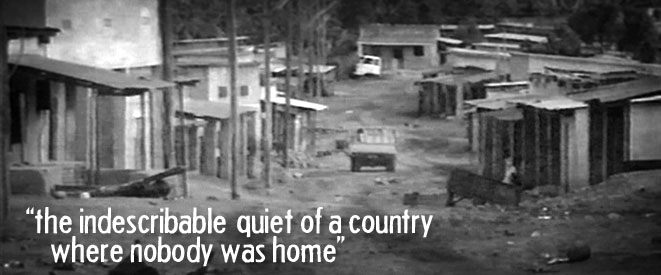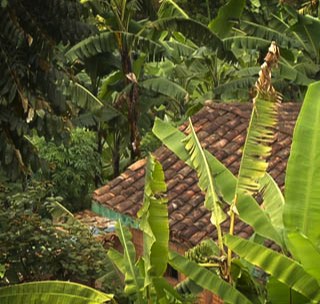Encounters with conflict and peace
A place where nothing stirred

Nothing moved or breathed anywhere that we could see. The only traffic now was relief trucks and whatever the RPF was rolling down to besieged Kigali. In the previous few weeks the highway had been witness to a vast human exodus. Tens of thousands of Hutus fled south towards Kigali, the rebels in angry pursuit.

Now the roadside grasses were sprouting in every direction, leaning out into the highway so that they brushed the windows of our cars. The rains had brought forth a great tangle of vegetation. With nobody to cultivate the fields the weeds and wild grasses were sweeping across the countryside. In less than five minutes we had gone from a country where people were going out into the fields, gathering wood, cooking food, walking and enjoying the new morning, to a place where nothing stirred.

Apart from that immense silence I can recall two things very vividly about those first moments inside Rwanda: there were thousands of yellow and white flowers, peeking out from the grassy wilderness, and hovering above them wave after wave of white butterflies. dancing in the indescribable quiet of a country where nobody was home.
NORTH OF BYUMBA, and we are dipping into a long valley. The countryside is a sheet of deep green that rises in terraces on either side of the road. There are fields full of banana, and avocado plantations. The fruit sits on the trees ripening in the still heat of the late afternoon. Birds drop occasionally into the trees and peck at the green bananas. They feast until they are hardly able to fly because there are no humans to scare them away.

The people of this area were Hutus who fled before the advancing rebel armies in the previous few weeks. Before that at least some of them had joined the slaughter of their Tutsi neighbours. Some of the houses here belong to Tutsis who will never come back to reclaim them.
From Season of Blood. A Rwandan Journey by Fergal Keane. Images by Dave Fullerton
< previous page | next page >
In this section
STARTING A GENOCIDE
Whose idea was it?
How did it start?
The foreigners are leaving
Hate radio
DETAILS
Roadblocks
The little things
INSIGHT
A simple plan
This new job
A strangeness of mind
Personalities
A good man
FOCUS ON THE BUGESERA
The Bugesera
Ntarama church massacre
A day in the marshes
MZUNGUS
The role of the west
Two French missionaries
A journalist's story
THE END OF THE GENOCIDE
The refugee crisis
A country with nobody home

Whose idea was it?
How did it start?
The foreigners are leaving
Hate radio
DETAILS
Roadblocks
The little things
INSIGHT
A simple plan
This new job
A strangeness of mind
Personalities
A good man
FOCUS ON THE BUGESERA
The Bugesera
Ntarama church massacre
A day in the marshes
MZUNGUS
The role of the west
Two French missionaries
A journalist's story
THE END OF THE GENOCIDE
The refugee crisis
A country with nobody home

